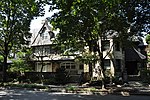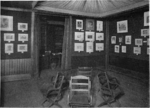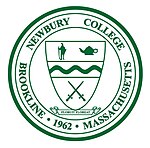Reservoir station (MBTA)
Former Boston and Albany Railroad stationsGreen Line (MBTA) stationsRailway stations in Brookline, MassachusettsRailway stations in the United States opened in 1852

Reservoir station is a light rail station on the MBTA Green Line D branch, located in Brookline, Massachusetts near Cleveland Circle and the south edge of Brighton. The station is adjacent to Reservoir Yard and Carhouse, with the Cleveland Circle terminus of the C branch just a block away. With a daily ridership of 3,395, Reservoir is the second-busiest surface stop on the D branch (after Brookline Village).Reservoir station is accessible, with raised platforms to accommodate low-floor trams. MBTA bus routes 51 and 86 terminate at the Reservoir busway off Chestnut Hill Avenue.
Excerpt from the Wikipedia article Reservoir station (MBTA) (License: CC BY-SA 3.0, Authors, Images).Reservoir station (MBTA)
Clinton Road,
Geographical coordinates (GPS) Address External links Nearby Places Show on map
Geographical coordinates (GPS)
| Latitude | Longitude |
|---|---|
| N 42.335277777778 ° | E -71.148055555556 ° |
Address
Reservoir
Clinton Road
02447
Massachusetts, United States
Open on Google Maps









